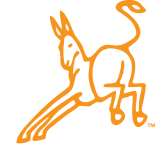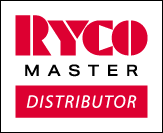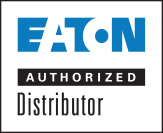How to Extend the Life-Expectancy of Your Hydraulic Hoses in The Texas Gulf Coast Area
Proper care can make a hydraulic hose last five to ten years, but various environmental and worksite-related factors can significantly shorten its life expectancy. In this guide, we discuss how to get the most out of your hydraulic hoses, including environmental factors common in the Texas Gulf area.
The Anatomy of a Hydraulic Hose
Hydraulic hoses have three layers. Each serves a specific function, and they are exposed to different factors that can affect the hose's lifespan.
- The tube is the innermost layer that handles transport. It is in constant contact with the fluids it carries.
- The reinforcement layer is made of wire, and it handles the constant pressure inside the hose.
- The cover is the outermost layer that protects the tube and reinforcement from outside factors, including cuts, abrasions, and weather. Additional covers and sleeves may also reinforce the cover for additional protection.
If one of these layers fails, the rest of the hose will quickly fail with it. That is why keeping the surface safe is not enough to extend the hose's lifespan.
Factors That Shorten a Hydraulic Hose’s Life Span
There are a number of things that accelerate wear and tear on the hoses.
Natural Aging.
The hose's life span starts when it is manufactured, not the first day it is used. Even if you store a hose in an ideal environment, the materials will continue to degrade over time. This is why you should inspect your spare hoses and check their manufacture date even if they have never been used.
While this factor can not be negated, you can slow down the aging process by storing the hoses in their ideal temperature range away from UV damage and Texas’s extreme temperature fluctuations.
Extreme Temperatures
Each hose is made of materials that degrade and become brittle when they are frequently exposed to very high or low temperatures. The Texas Gulf Coast is very unforgiving in this regard. We can see extreme heat in the summer, plummeting cold in the winter, and 30+ degree temperature changes in a matter of hours at any time.
A few ways to counter harsh temperature-related wear and tear include:
- Storing unused hoses in a regulated environment at their ideal temperature range
- Strategic placement of hoses to keep them protected from the elements
- Using external covers, sleeves, and other protectors to insulate the hose from ambient elements.
- Making sure fluid temperatures stay in the manufacturer’s recommended range
Contamination
Contaminants do not just affect the fluid’s quality. It can lead to corrosion in the tube from chemical reactions to the contaminant. It can also force the tube and entire assembly system to work harder by thickening the fluid or building up along the inside of the tube. A few ways contaminants can enter the system include:
- Not properly cleaning the hydraulic hose before assembly
- Improperly installed or incompatible fittings leading to leaks in the system
- Improperly stored hoses are exposed to Gulf silt, airborne salinity, dust, and other contaminants, especially during extreme weather like hurricanes or flooding.
Incompatible Hoses and Fittings
Every hose is made to carry specific kinds of fluids in a limited range of temperatures, fluid pressure, and fluid thicknesses. Some hoses work perfectly for some fluids but rapidly corrode when exposed to others. Some are cost-efficient for one task but will burst within days when the pressure exceeds its limits.
Fittings also play a major role. If a fitting is not suitable for the hose, it leads to pressure issues, leaks, and other problems. Likewise, if the fitting is not made to handle high humidity, the salinity in the air, or the Gulf Coast’s volatile weather patterns, it can corrode prematurely and cause a range of issues. This extra stress drastically lowers the hoses' life expectancy.
To get the most return on your investment in your hydraulic hoses, make sure they are a perfect match for your project and the Texas environment they will be exposed to. Ensure you take the same care when choosing and installing the fittings. A reputable supplier can help you navigate this entire process fast.
Ignoring Manufacturer’s Guidelines
Reputable Manufacturers put their hydraulic hoses through a series of tests to find where their durability and effectiveness start to decline. The results are shared with their customers through the manufacturer’s guidelines. This includes:
- The kinds of materials and fluids the hose can transport
- The ideal temperature range of the fluids transported
- The ideal temperature range of its surroundings
- The pressure range the reinforcing wires can tolerate
- How far the hose can be bent without breaking the reinforcing wires (also known as the bend radius).
Acting outside these guidelines risks extra wear and tear on the hose, significantly shortening its lifespan.
Signs a Hydraulic Hose Needs To Be Replaced
When a hose reaches the end of its usable life, you need to replace it to prevent bursts, machine failure, and potential safety hazards. Here are some of the signs that your hose is at the end of its lifespan:
- Twists or Kinks indicate structural weakness in the reinforcement layer.
- Tears or rips in the cover that expose or break the reinforcing wire layer.
- Visible wires poking out or exposed to the elements
- Cracked or corroded fittings
- Brittleness in the hose cover layer
- Bits of hose tubing present in the hydraulic fluid
- Cracked or corroded fittings
- Hydraulic fluids or oils on the surface of the hose that indicate a tiny leak
- Puddles, spraying, or other signs of a leak in the line
Action Supply Provides Excellent Guidance and Parts
We are dedicated to helping you get the job done right and get the most out of your parts. Contact us to find the best parts for your system and expert advice on how to keep them functioning a long time.





